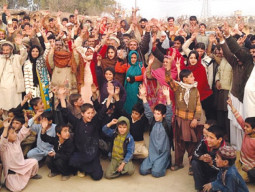
KARACHI: Karachi, the city as we know it today, has grown from a small village to a burgeoning metropolis in the span of a few decades. And who better to speak about the mushroom growth of the city than the man who has observed it so closely. Arif Hasan, architect, urban planner and author, knows what he is talking about.
At a seminar at Karachi Institute of Technology and Entrepreneurship in Korangi, Hasan discussed Karachi and its issues with regards to development and planning. “Karachi is the fastest-growing city in the world. Between the 1998 census and today, the population has increased from 9.8 million to 21 million. No other city in the world has grown this fast in such a short period of time,” remarked Hasan.

“Initially, Ayub Khan created two satellite towns to house refugees - the Landhi-Korangi area and North Karachi. This was the first decision that divided Karachi into rich and poor areas as well as divide it on basis of ethnicity” he recalled. “The settlements in the first stages were on the basis of clans, not income. With the development of societies in the 1950s, this old pattern broke up, leading to class-based settlements as well as ethnically homogenous ones.”
The creation of DHA used precious land, leaving the poorer members of society with no option but to live in katchi abadis. The development of these katchi abadis as well as increased urbanisation led to the disappearance of sub-soil water and the removal of sand and gravel from riverbeds.
According to Hasan’s estimations, there are 5,000 people per hectare in high-density areas in Karachi, such as Lyari, Lines Area and Chaki Bora. In Defence, there are 160 people per hectare. The people whose houses range from 400 to 2000 square yards make up 2% of Karachi’s population, yet they occupy 30% of Karachi’s residential area.
People who previously resided on the city’s periphery no longer find it feasible to do so because of the high transport costs. Indeed, even gender values and family structures are changing. In 1984, 39 per cent of the women in the 15 to 24 age group were married, compared to 17 per cent of men in the same age group. In 1998, the numbers decreased to 18per cent among women and 7per cent among men.
One of the major reasons for this is the increased education of women who make up 68 per cent of Karachi University’s student body, 87 per cent of the student body in medical schools, 46 per cent of students in NED University and 92 per cent of architecture and planning students as of 2006. “There is a sizable middle class who have the same aspirations as you do.”
A big role has to be played by the major political parties in Karachi, he explained. “Both parties [Pakistan Peoples Party and Muttahida Qaumi Movement] have to rise above the politics of constituency and realise that both parties have valid points,” he explained. “The problems are understood by everyone, as are the solutions, yet nothing happens. We need a powerful government that can act against the interests of others.”
Published in The Express Tribune, February 17th, 2014.




























































COMMENTS (1)
Comments are moderated and generally will be posted if they are on-topic and not abusive.
For more information, please see our Comments FAQ